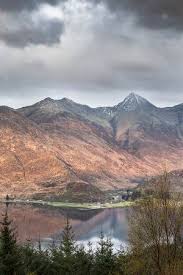Scots think more should be done to protect the country’s most scenic landscapes.
This is the outcome of a survey commissioned by conservation charity the National Trust for Scotland.
Among the findings of the survey is the fact that 95% strongly or tend to agree that scenic areas are vital for tourism.
Scenic landscapes make 91% of people proud to live in Scotland.
There should be restrictions on large-scale industrial development in Scotland’s most important landscapes, said 92% of respondents. And the planning system should include more measures to protect NSAs, according to 84%.
Location, social background, age and gender made virtually no difference to the opinions expressed through the survey.
It was also clear that respondents were unaware of or confused by the many different designations intended to protect landscapes in Scotland: for example, 88% were “definitely aware” of National Parks whereas the percentage for National Scenic Areas was only 20% and 23% for Wild Land Areas.
The National Trust for Scotland’s head of conservation and policy, Stuart Brooks said: “While the social and economic situation and types of pressure have changed since 1978, it’s abundantly clear that one thing has been constant: the people of Scotland’s determination to see the landscapes they love properly protected.
“There’s an immediate opportunity through the Planning Bill currently before Parliament to ensure our National Scenic Areas and Wild Land Areas are future proofed to ensure they continue to protect the beauty of our landscape and support our economy and communities.
“Let’s also look beyond the Highlands and begin a discussion about the value of landscapes everywhere and the role their stewardship can play in the health and prosperity of our nation.”
The online survey of a sample of 1,229 people representative of Scotland’s population by age and gender was commissioned by the Trust from Mark Diffley Consultancy and Research to mark four decades of National Scenic Areas (NSAs).
NSAs were first identified by the then Countryside Commission for Scotland in 1978. This followed publication of Highland Landscape by WH Murray commissioned by the National Trust for Scotland in 1962 which was the first national assessment of Scotland’s most scenic areas.
It came from a strong desire to protect the beauty of Scotland’s landscape and enable “economic” and “amenity” factors to be weighed evenly.










